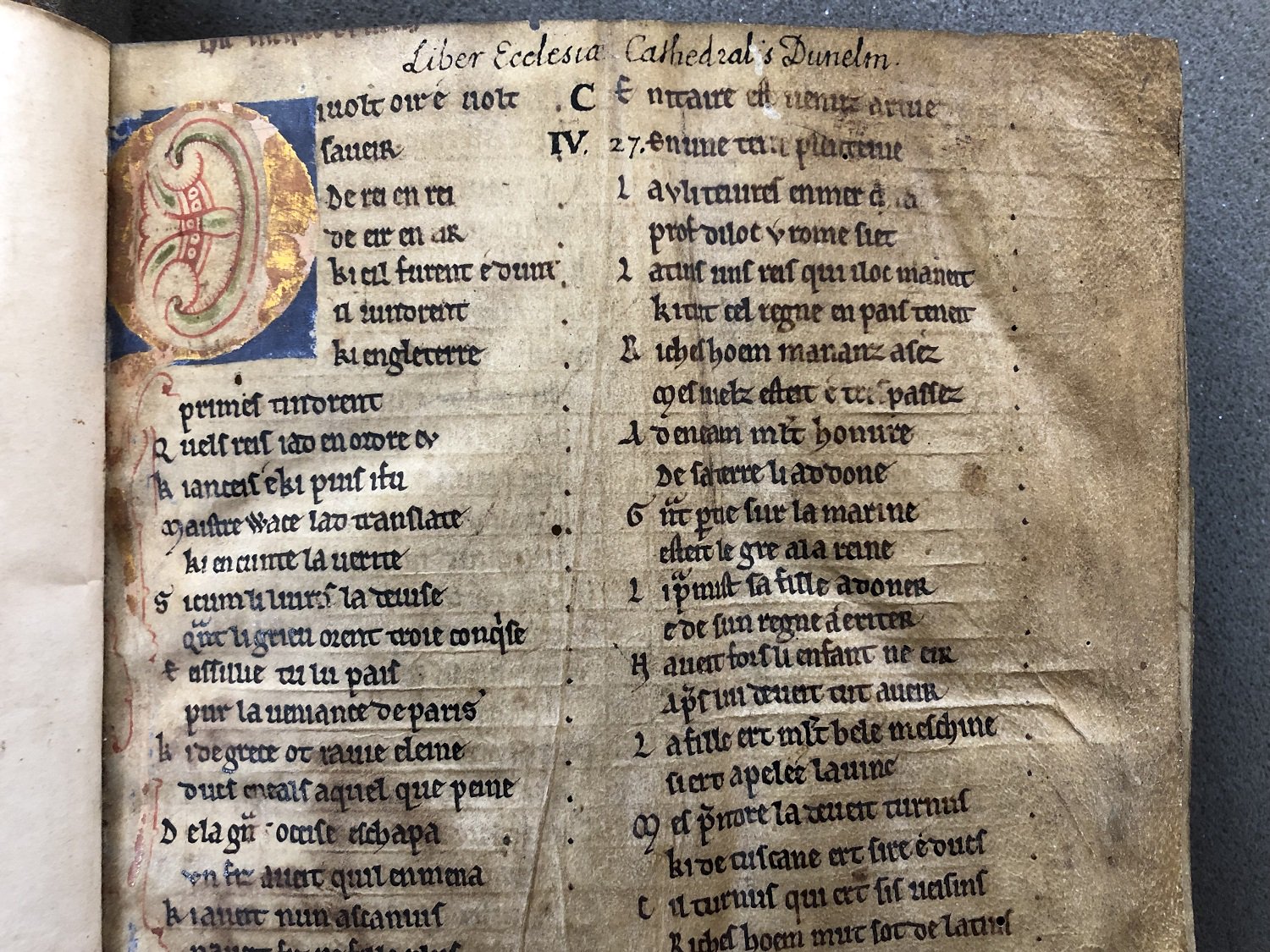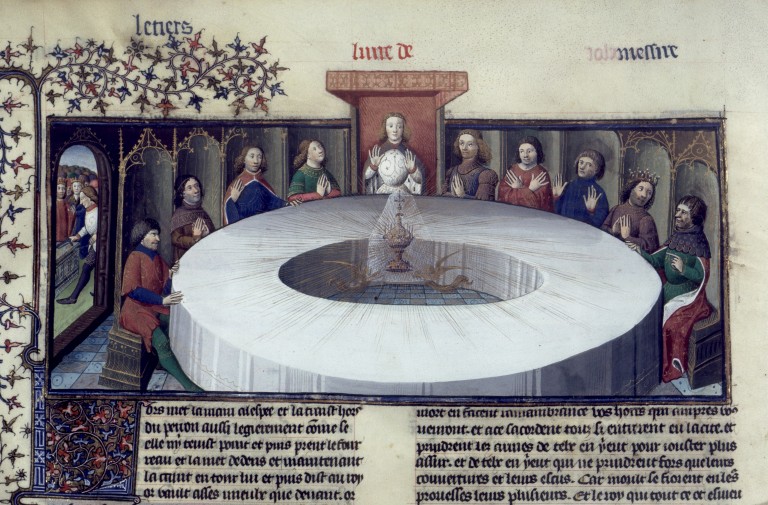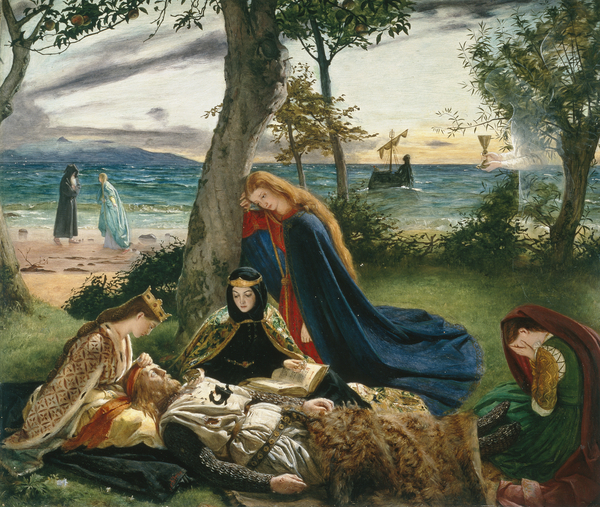|
Layamon
Layamon or Laghamon (, ; ) – spelled Laȝamon or Laȝamonn in his time, occasionally written Lawman – was an English poet of the late 12th/early 13th century and author of the ''Brut'', a notable work that was the first to present the legends of Arthur and the Knights of the Round Table in English poetry. J. R. R. Tolkien valued him as a transmitter of early English legends in a fashion comparable to the role played with respect to Icelandic legend by Snorri Sturluson. Life and influence Layamon describes himself in his poem as a priest, living at Areley Kings in Worcestershire. His poem had a significant impact on medieval history writing in England and the development of Arthurian literature and subsequently provided inspiration for numerous later writers, including Sir Thomas Malory and Jorge Luis Borges. Brut '' Brut'' (ca. 1190) is a Middle English poem compiled and recast by the English priest Layamon. It is named after Britain's mythical founder, Brutus of Troy. ... [...More Info...] [...Related Items...] OR: [Wikipedia] [Google] [Baidu] |
Layamon's Brut
Layamon's ''Brut'' (ca. 1190 - 1215), also known as ''The Chronicle of Britain'', is a Middle English poem compiled and recast by the English priest Layamon. Layamon's ''Brut'' is 16,096 lines long and narrates the history of Britain. It is the first historiography written in English since the ''Anglo-Saxon Chronicle''. Named for Britain's mythical founder, Brutus of Troy, the poem is largely based on the Anglo-Norman French ''Roman de Brut'' by Wace, which is in turn a version of Geoffrey of Monmouth's Latin ''Historia Regum Britanniae''. Layamon's poem, however, is longer than both and includes an enlarged section on the life and exploits of King Arthur. It is written in the alliterative verse style commonly used in Middle English poetry by rhyming chroniclers, the two halves of the alliterative lines being often linked by rhyme as well as by alliteration. Language and style The versification of the ''Brut'' has proven extremely difficult to characterise. Written in a loose al ... [...More Info...] [...Related Items...] OR: [Wikipedia] [Google] [Baidu] |
Roman De Brut
The ''Brut'' or ''Roman de Brut'' (completed 1155) by the poet Wace is a loose and expanded translation in almost 15,000 lines of Norman-French verse of Geoffrey of Monmouth's Latin ''History of the Kings of Britain''. It was formerly known as the ''Brut d'Engleterre'' or ''Roman des Rois d'Angleterre'', though Wace's own name for it was the ''Geste des Bretons'', or Deeds of the Britons. Its genre is equivocal, being more than a chronicle but not quite a fully-fledged romance. It narrates a largely fictional version of Britain's story from its settlement by Brutus, a refugee from Troy, who gives the poem its name, through a thousand years of pseudohistory, including the story of king Leir, up to the Roman conquest, the introduction of Christianity, and the legends of sub-Roman Britain, ending with the reign of the 7th-century king Cadwallader. Especially prominent is its account of the life of King Arthur, the first in any vernacular language, which instigated and influenc ... [...More Info...] [...Related Items...] OR: [Wikipedia] [Google] [Baidu] |
Cotton Caligula
This is an incomplete list of some of the manuscripts from the Cotton library that today form the Cotton collection of the British Library. Some manuscripts were destroyed or damaged in a fire at Ashburnham House in 1731, and a few are kept in other libraries and collections. Robert Bruce Cotton organized his library in a room long by six feet wide filled with bookpresses, each with the bust of a figure from classical antiquity on top. Counterclockwise, these were Julius Caesar, Augustus, Cleopatra, Faustina, Tiberius, Caligula, Claudius, Nero, Galba, Otho, Vitellius, Vespasian, Titus, and Domitian. (Domitian had only one shelf, perhaps because it was over the door). In each press, each shelf was assigned a letter; manuscripts were identified by the bust over the press, the shelf letter, and the position of the manuscript (in Roman numerals) counting from the left side of the shelf. Thus, the Lindisfarne Gospels, Nero B.iv, was the fourth manuscript from the left on the second sh ... [...More Info...] [...Related Items...] OR: [Wikipedia] [Google] [Baidu] |
Round Table
The Round Table ( cy, y Ford Gron; kw, an Moos Krenn; br, an Daol Grenn; la, Mensa Rotunda) is King Arthur's famed table in the Arthurian legend, around which he and his knights congregate. As its name suggests, it has no head, implying that everyone who sits there has equal status, unlike conventional rectangular tables where participants order themselves according to rank. The table was first described in 1155 by Wace, who relied on previous depictions of Arthur's fabulous retinue. The symbolism of the Round Table developed over time; by the close of the 12th century it had come to represent the chivalric order associated with Arthur's court, the Knights of the Round Table. Origins Though the Round Table is not mentioned in the earliest accounts, tales of King Arthur having a marvellous court made up of many prominent warriors are ancient. Geoffrey of Monmouth, in his ''Historia Regum Britanniae'' (composed c. 1136) says that, after establishing peace throughout Britain, Arth ... [...More Info...] [...Related Items...] OR: [Wikipedia] [Google] [Baidu] |
List Of Manuscripts In The Cotton Library
This is an incomplete list of some of the manuscripts from the Cotton library that today form the Cotton collection of the British Library. Some manuscripts were destroyed or damaged in a fire at Ashburnham House in 1731, and a few are kept in other libraries and collections. Robert Bruce Cotton organized his library in a room long by six feet wide filled with bookpresses, each with the bust of a figure from classical antiquity on top. Counterclockwise, these were Julius Caesar, Augustus, Cleopatra, Faustina, Tiberius, Caligula, Claudius, Nero, Galba, Otho, Vitellius, Vespasian, Titus, and Domitian. (Domitian had only one shelf, perhaps because it was over the door). In each press, each shelf was assigned a letter; manuscripts were identified by the bust over the press, the shelf letter, and the position of the manuscript (in Roman numerals) counting from the left side of the shelf. Thus, the Lindisfarne Gospels, Nero B.iv, was the fourth manuscript from the left on the second sh ... [...More Info...] [...Related Items...] OR: [Wikipedia] [Google] [Baidu] |
Cotton Otho
This is an incomplete list of some of the manuscripts from the Cotton library that today form the Cotton collection of the British Library. Some manuscripts were destroyed or damaged in a fire at Ashburnham House in 1731, and a few are kept in other libraries and collections. Robert Bruce Cotton organized his library in a room long by six feet wide filled with bookpresses, each with the bust of a figure from classical antiquity on top. Counterclockwise, these were Julius Caesar, Augustus, Cleopatra, Faustina, Tiberius, Caligula, Claudius, Nero, Galba, Otho, Vitellius, Vespasian, Titus, and Domitian. (Domitian had only one shelf, perhaps because it was over the door). In each press, each shelf was assigned a letter; manuscripts were identified by the bust over the press, the shelf letter, and the position of the manuscript (in Roman numerals) counting from the left side of the shelf. Thus, the Lindisfarne Gospels, Nero B.iv, was the fourth manuscript from the left on the second sh ... [...More Info...] [...Related Items...] OR: [Wikipedia] [Google] [Baidu] |
Historia Regum Britanniae
''Historia regum Britanniae'' (''The History of the Kings of Britain''), originally called ''De gestis Britonum'' (''On the Deeds of the Britons''), is a pseudohistorical account of British history, written around 1136 by Geoffrey of Monmouth. It chronicles the lives of the kings of the Britons over the course of two thousand years, beginning with the Trojans founding the British nation and continuing until the Anglo-Saxons assumed control of much of Britain around the 7th century. It is one of the central pieces of the Matter of Britain. Although taken as historical well into the 16th century, it is now considered to have no value as history. When events described, such as Julius Caesar's invasions of Britain, can be corroborated from contemporary histories, Geoffrey's account can be seen to be wildly inaccurate. It remains, however, a valuable piece of medieval literature, which contains the earliest known version of the story of King Lear and his three daughters, and helped ... [...More Info...] [...Related Items...] OR: [Wikipedia] [Google] [Baidu] |
Avalon
Avalon (; la, Insula Avallonis; cy, Ynys Afallon, Ynys Afallach; kw, Enys Avalow; literally meaning "the isle of fruit r appletrees"; also written ''Avallon'' or ''Avilion'' among various other spellings) is a mythical island featured in the Arthurian legend that first appeared in Geoffrey of Monmouth's influential 1136 ''Historia Regum Britanniae'' as a place of magic where King Arthur's sword Excalibur was made and later where Arthur was taken to recover from being gravely wounded at the Battle of Camlann. Since then, the island has become a symbol of Arthurian mythology, similar to Arthur's castle of Camelot. Avalon was associated from an early date with mystical practices and magical figures such as King Arthur's half-sister Morgan, cast as the island's ruler by Geoffrey and some of the later authors inspired by him. Certain Briton traditions maintain that Arthur is an eternal king who had never truly died but would return, and the particular motif of his rest in Morg ... [...More Info...] [...Related Items...] OR: [Wikipedia] [Google] [Baidu] |
Areley Kings
Areley Kings is a Worcestershire village on the River Severn 10 miles north of Worcester in the picturesque area of the Wyre Forest. The area is featured in the Domesday Book and many historical places of interest, like Areley Hall, are open to visitors. Nearby Stourport-on-Severn grew during the Victorian era and is still very popular with tourists and holiday makers all year round for canal and river cruising and for the many well signed walks through some of the finest Worcestershire countryside. History The manor of Areley Kings was from early times part of the manor of Martley and the rector of Martley still has the right to appoint the rector at Areley Kings. The manor of Areley originated in a fishery at "Ernel" which, with the land belonging to it, was granted by the Empress Matilda to Bordesley Abbey upon its foundation in 1136, and retained until the Dissolution. Prince Rupert of the Rhine is rumoured to have slept a night at Areley House during the English Civil War ... [...More Info...] [...Related Items...] OR: [Wikipedia] [Google] [Baidu] |
Arthurian Literature
The Matter of Britain is the body of medieval literature and legendary material associated with Great Britain and Brittany and the legendary kings and heroes associated with it, particularly King Arthur. It was one of the three great Western story cycles recalled repeatedly in medieval literature, together with the Matter of France, which concerned the legends of Charlemagne, and the Matter of Rome, which included material derived from or inspired by classical mythology. History The three "Matters" were first described in the 12th century by French poet Jean Bodel, whose epic ' ("Song of the Saxons") contains the line: The name distinguishes and relates the Matter of Britain from the mythological themes taken from classical antiquity, the "Matter of Rome", and the tales of the Paladins of Charlemagne and their wars with the Moors and Saracens, which constituted the "Matter of France". King Arthur is the chief subject of the Matter of Britain, along with stories related to ... [...More Info...] [...Related Items...] OR: [Wikipedia] [Google] [Baidu] |
Middle English
Middle English (abbreviated to ME) is a form of the English language that was spoken after the Norman conquest of 1066, until the late 15th century. The English language underwent distinct variations and developments following the Old English period. Scholarly opinion varies, but the ''Oxford English Dictionary'' specifies the period when Middle English was spoken as being from 1150 to 1500. This stage of the development of the English language roughly followed the High to the Late Middle Ages. Middle English saw significant changes to its vocabulary, grammar, pronunciation, and orthography. Writing conventions during the Middle English period varied widely. Examples of writing from this period that have survived show extensive regional variation. The more standardized Old English language became fragmented, localized, and was, for the most part, being improvised. By the end of the period (about 1470) and aided by the invention of the printing press by Johannes Gutenberg in 14 ... [...More Info...] [...Related Items...] OR: [Wikipedia] [Google] [Baidu] |
Brutus Of Troy
Brutus, also called Brute of Troy, is a legendary descendant of the Trojan hero Aeneas, known in medieval British history as the eponymous founder and first king of Britain. This legend first appears in the ''Historia Brittonum'', an anonymous 9th-century historical compilation to which commentary was added by Nennius, but is best known from the account given by the 12th-century chronicler Geoffrey of Monmouth in his ''Historia Regum Britanniae''. ''Historia Brittonum'' Some have suggested that attributing the origin of 'Britain' to the Latin 'Brutus' may be ultimately derived from Isidore of Seville's popular 7th-century work ''Etymologiae'', in which it was speculated that the name of Britain comes from ''bruti'', on the basis that the Britons were, in the eyes of that author, brutes, or savages. A more detailed story, set before the foundation of Rome, follows, in which Brutus is the grandson or great grandson of Aeneas – a legend that was perhaps inspired by Isidore's spur ... [...More Info...] [...Related Items...] OR: [Wikipedia] [Google] [Baidu] |





.jpg)